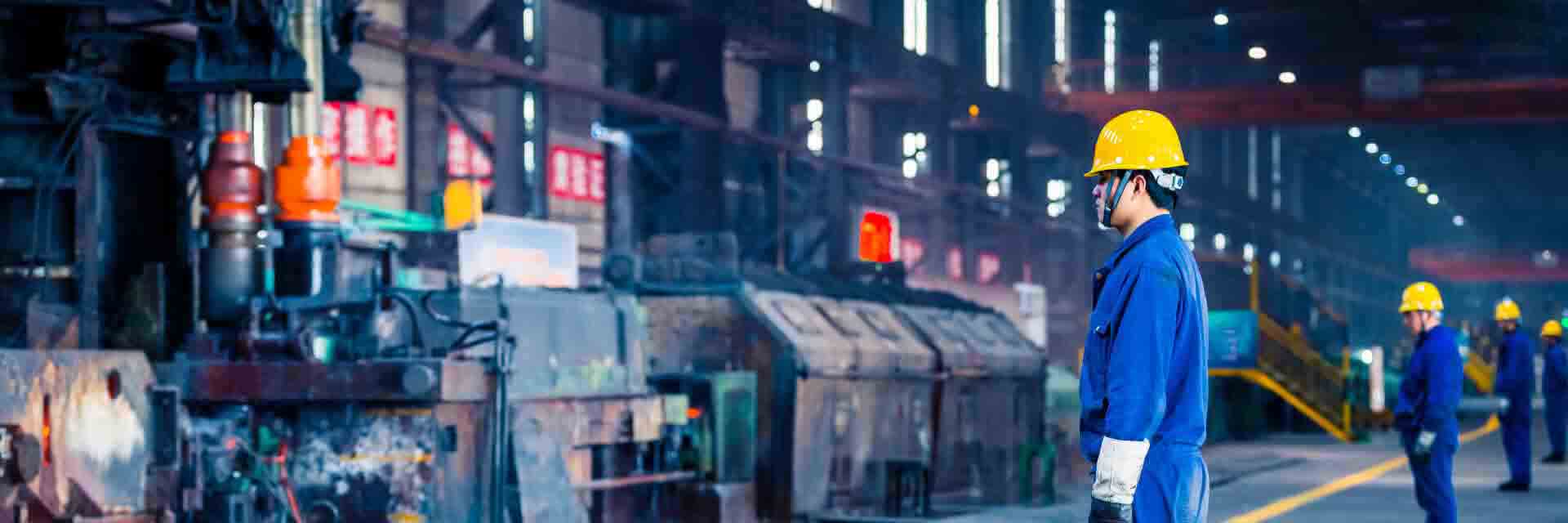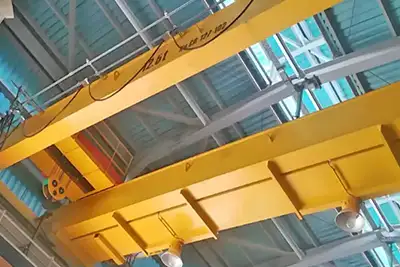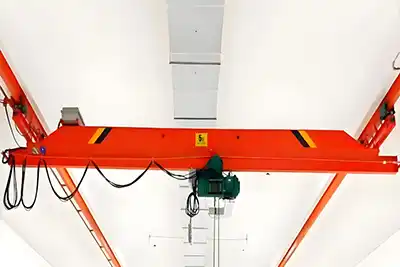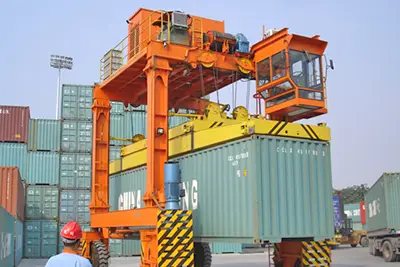Get the Best Steel Mill Crane Price—Start Here First!
Learn what key details to provide before requesting a steel mill crane quote to ensure accurate pricing & faster response. Get your steel mill crane!
Introduction
Why Just Asking for a Steel Mill Crane Price Doesn’t Work
Many buyers begin with this question:
“Can you give me your best price for a steel mill overhead crane?”
It sounds simple, but it rarely works. Without the right details, any price you get is just a rough guess—not a real solution. Steel mill cranes, especially overhead cranes used in steel plants, must be carefully matched to your working conditions. That includes your plant layout, material types, and lifting requirements.
If the details are missing, you might get a generic price that doesn’t reflect what you truly need. That can lead to miscommunication, delays, and even rework. A good crane quote starts with a clear understanding of your specific steel mill application.
What Affects the Price of a Steel Mill Overhead Crane?
Steel mill overhead cranes are not off-the-shelf products. They’re custom-built to handle heavy loads like steel coils, billets, slabs, or molten metal. Each working condition—hot, dusty, or corrosive—affects the crane’s structure, hoisting mechanism, and control system.
Here are key factors that influence the final price of a steel plant crane:
- Crane type: Overhead bridge crane, gantry crane, ladle crane, or coil handling crane?
- Lifting capacity: 10 ton, 20 ton, 50 ton, or more?
- Lifting tools: Hook, magnet, slab clamp, coil grab—what are you lifting?
- Span and lifting height: What’s the runway width and required hook height?
- Operating environment: Is it an indoor crane for steel rolling mills or an outdoor crane for steel stockyards?
- Working duty: Is it heavy-duty for continuous use, or light duty for occasional lifting?
- Steel product types: Coils, slabs, billets—each requires different handling gear.
- Power and control: What voltage do you use? Do you need cabin control, remote control, or automation?
Each of these affects how your steel mill crane is designed—and priced.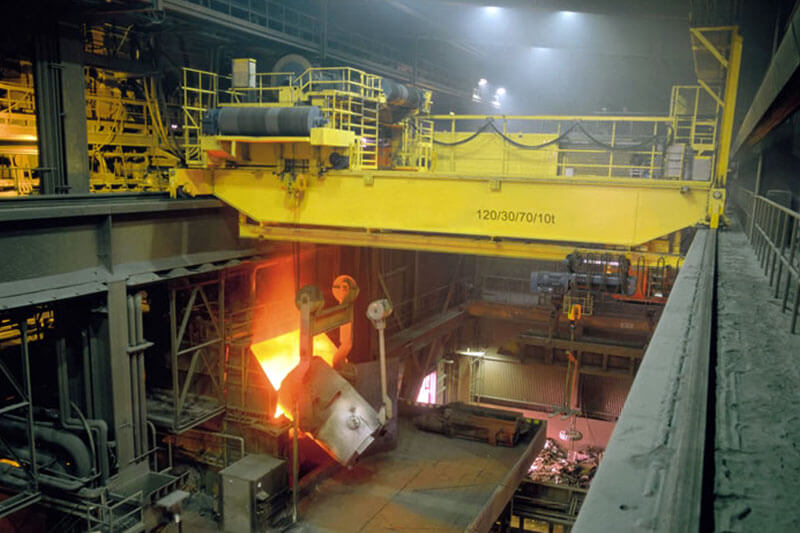
steel mill ladle cranes, customized for your steel mill plant
What This Guide Will Help You Do
This guide is for crane buyers, sourcing engineers, and project planners who need accurate prices for overhead cranes used in steel plants. Whether you're buying a ladle handling crane for molten metal or a billet crane for transferring hot products, providing the right information will save you time and money.
By sharing complete project details, you’ll:
- Get a precise steel mill crane quote with fewer surprises later
- Choose the right crane for your steel plant—not just any crane
- Reduce the risk of technical errors or rework
- Speed up the quotation and design process
- Make sure the crane meets your plant’s actual lifting and safety needs
This article will show you exactly what to fill out when asking for a steel mill crane quotation. Let’s begin—so you can get the best price for the right crane.
Why Detailed Information Matters
When buyers ask for a quote without giving enough detail, they often receive a generic or inflated offer. This is especially true when it comes to custom equipment like a steel mill overhead crane.
A steel plant is not like a warehouse or light factory. The loads are heavier. The heat is higher. The materials are more complex. Whether you’re handling molten steel, coils, slabs, or billets, the crane must be designed to match your exact working conditions.
Providing accurate and specific information helps avoid costly misunderstandings—and gets you a crane that’s truly fit for purpose.
Helps You Avoid Vague or Inflated Pricing
Without detailed specs, most suppliers will assume the worst-case scenario to protect themselves. That leads to:
- Overbuilt designs that increase cost unnecessarily
- Guess-based quotes that may not reflect what you actually need
- Extra charges later when real requirements come to light
For example, if you simply ask for a “25-ton overhead crane,” the supplier may quote a steel mill ladle crane with high-heat resistance and safety redundancy—when all you needed was a billet crane for cold handling.
You end up paying for features you don’t need—or worse, missing features that you do.
Ensures the Crane Actually Fits Your Steel Mill Application
Not all overhead cranes for steel mills are built the same.
Here’s what changes based on your working conditions:
- For molten metal: A ladle handling crane needs a high safety factor, heat shields, and double braking systems.
- For steel coils: A coil handling crane may need a rotating C-hook or electro-permanent magnet with anti-swing control.
- For billets or slabs: You may need slab clamps or a spreader beam, depending on the bundle size and temperature.
- For outdoor use: A gantry-style steel mill crane with rain covers and anti-corrosion coatings may be needed.
If you don’t provide these usage details, your crane might not match your material flow or workshop layout—and fixing that later can be expensive.
Speeds Up Proposal and Crane Design Time
A clear, well-documented inquiry lets your supplier work faster.
With enough input, the crane team can:
- Skip the back-and-forth emails asking for missing info
- Begin structure calculations, beam design, and hoist selection right away
- Prepare a complete technical and commercial offer quickly
- Shorten the whole proposal cycle from weeks to days
This is critical when you're working with a tight construction or production schedule. A complete request can mean the difference between hitting your deadline—or not.
Minimizes Back-and-Forth and Prevents Costly Miscommunication
Many delays in steel mill crane projects come from unclear communication between buyer and supplier. Here’s what can go wrong:
- Wrong crane span because the bay width wasn’t measured accurately
- Undersized hoist due to unclear product weight or lifting frequency
- Power supply mismatch (e.g., 440V requested, but only 380V available onsite)
- Incomplete runway data causing installation challenges later
By including all the relevant data from the start—like your workshop drawings, lifting object type, power requirements, and control preference—you prevent surprises later on.
Plus, a complete inquiry shows you're serious. It encourages the supplier to give your project priority and assign their experienced team to your quote.
What You Gain by Being Thorough
When you’re buying a steel mill overhead crane, you’re not just buying metal and motors. You’re investing in safety, performance, and long-term plant efficiency. Giving the right technical and usage information means you:
- Receive a more accurate and fair crane price
- Get a steel plant crane that actually works in your facility
- Avoid delays in proposal, design, and manufacturing
- Build a strong relationship with your supplier, based on clear expectations
- Protect your project schedule and avoid unnecessary redesigns
Essential Information to Fill Out for Accurate Steel Mill Crane Pricing
If you want the best price for a steel mill crane, you need to give more than just the tonnage. Every steel mill overhead crane is custom-built for specific conditions. Whether you’re lifting hot slabs, transferring coils, or pouring molten metal, the design must match the job.
To help your crane supplier prepare an accurate, fair, and practical offer, here are the key details you should include when requesting a quote.
Crane Type and Application
Start by clearly describing the type of crane you need and what it will be used for in your steel plant.
Crane type
- Overhead crane (top-running or under-running)
- Gantry crane or semi-gantry crane (for yards or where no runway beams are available)
- Ladle crane (for molten steel or hot metal transfer)
- Coil handling crane (equipped with C-hooks or magnets)
- Billet crane or slab crane (for bar, bloom, or slab movement)
Each of these steel mill cranes has different structural demands and safety standards. For example, ladle cranes are designed for extreme heat and come with double braking systems and emergency protection.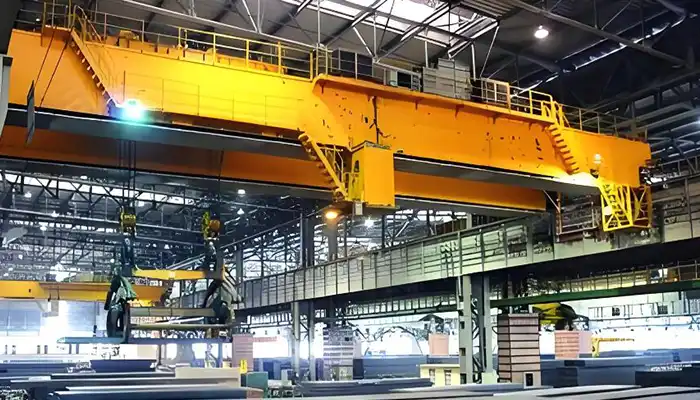
top running double girder overhead bridge crane
Crane application
- What material will the crane handle? Slabs, coils, billets, rebar bundles, molten steel, scrap?
- What part of the production line will it support? Melting, rolling, cutting, storage, or shipping?
Be clear about how the crane fits into your steel mill’s operations. This helps the supplier determine whether you need a heavy-duty crane, a fast-operating one, or a high-precision lifting system.
Usage frequency
- Occasional use (a few times a week)
- Regular use (daily operations)
- Continuous use (24/7 shifts or harsh-duty environments)
The more frequent the use, the stronger and more wear-resistant the crane needs to be. A continuously running billet crane needs different motors and structure than a light-use coil crane.
Indoor or outdoor use
- Indoor cranes usually have fewer environmental concerns.
- Outdoor steel mill cranes require weather protection, rust-proof paint, and possibly wind-resistant designs.
This detail affects motor protection, painting system, and even the type of control system recommended.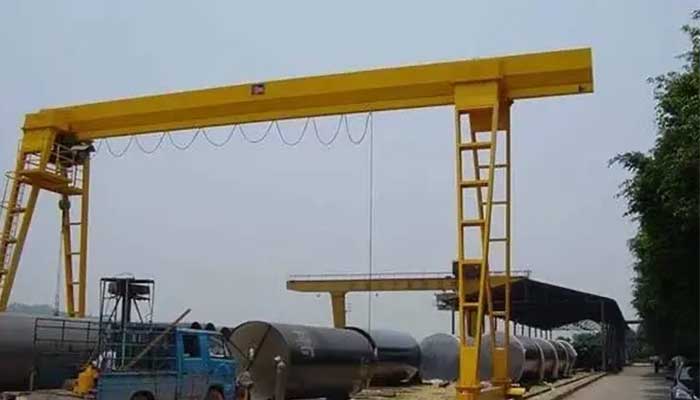
Steel mill gantry crane for indoor and outdoor material handling
Lifting Requirements
This section helps the crane designer select the right hoist, lifting mechanism, and structural configuration.
Rated lifting capacity
- What is the maximum weight you need to lift?
- Be specific—10 tons, 25 tons, 50 tons, 100 tons?
- Include if the lifting device (hook, magnet, etc.) is part of the rated load or not.
Always consider your heaviest load, and it’s smart to allow a 10–20% safety margin.
Number of hoists or trolleys
- Single hoist: For basic lifting tasks
- Dual hoists: For long or uneven loads like steel slabs
- Two trolleys: For tandem lifting or long-span applications
Billet cranes and slab cranes often need two-point lifting for stability. If you don’t specify this, the wrong configuration could be quoted.
Lifting height
- How high does the hook need to travel?
- Measure from the lowest lifting point (floor or pit) to the highest hook position you require.
This is critical in workshops with low headroom or where tall machinery is in the way. Underestimating this can cause interference issues.
Type of lifting device
- Standard hook: For general-purpose loads
- Magnet: For lifting steel plates, billets, or coils (hot or cold)
- Clamp: For slabs, blooms, or rectangular bars
- C-hook: For handling horizontal steel coils
- Grab bucket: Used for bulk or irregular material
Each lifting device changes the hoist’s technical design, power requirement, and crane control system. For example, an electromagnetic billet crane needs a power backup in case of outage, while a slab tong may need hydraulic or mechanical adjustment.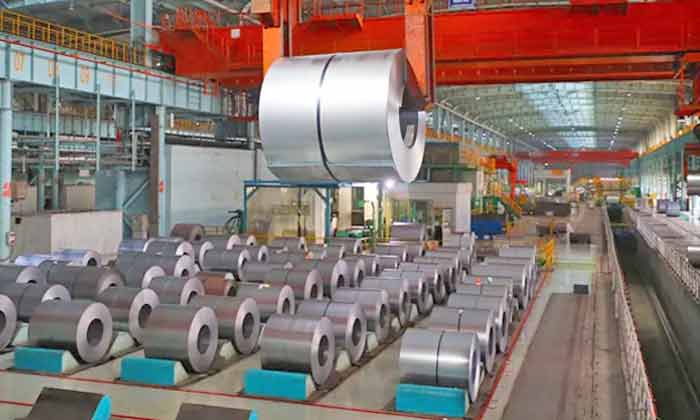
Span and Working Area
This section is about how far the steel mill overhead crane needs to reach and move within your building or yard. It’s basic but very important. Even small mistakes here can lead to major redesigns or extra costs.
Crane span
- Span means the distance between the two runway rails that the overhead crane runs on.
- You can measure it from the center of one runway beam to the center of the other.
- Common spans range from 10 to 35 meters, but for steel mill cranes, spans can go beyond that—especially for large bays handling slabs or coils.
Providing the exact span helps ensure the main girders and end carriages are properly designed. A mismatch could affect stability or make the crane unusable.
Total workshop or bay length
- How long is the crane bay from end to end?
- This helps determine how far the crane can travel in the long direction.
- If your steel plant has expansion plans, note that too.
The full bay length affects the rail design and total crane travel range. A 40-meter crane runway needs different supports and power supply than a 15-meter one.
Number of cranes in the same bay
- Will this steel mill overhead crane work alone or alongside other cranes in the same bay?
- If yes, how many, and do they ever operate close to each other?
This is important to avoid collisions. Your crane supplier may suggest an anti-collision system or spacing buffers. This is common in slab yards or coil warehouses with multiple high-tonnage cranes.
Travel Length and Speed Requirements
Next, let’s talk about how far and how fast your crane needs to move. Travel length and speed requirements affect motors, drives, control panels, and power supply design. It also plays a role in how productive your crane will be on a daily basis.
Crane travel distance
- This refers to the total length of the runway along which the crane will move.
- It should match the bay length, unless there are fixed stops or physical limits.
For example, a billet crane that transfers material across a 60-meter rolling shop has different rail and drive design than a coil handling crane used in a 25-meter packing area.
Lifting and travel speeds
- Do you need specific speeds for hoisting, cross-travel, or long travel?
- If not sure, your supplier can offer standard speeds. But if your process requires faster or slower movement, say so.
Slab cranes and ladle cranes may need slower, more stable lifting speeds. Coil cranes in logistics zones may need higher speeds to keep up with shipping schedules.
Also, if you need dual-speed or variable frequency drives (VFD), include that. It affects both price and performance.
Operation mode
- Will this steel mill crane be operated manually, semi-automatically, or fully automatically?
- Manual operation uses a pendant or remote control.
- Semi-automatic cranes may follow pre-set paths but still need human input.
- Fully automated cranes work based on sensors, software, and control systems.
Automation adds to the cost but increases efficiency. It’s common in coil storage systems, slab yards, and billet buffer zones in large steel mills.
Power Supply
Supplying power correctly is crucial for the smooth operation of your steel mill overhead crane. Getting this right from the start ensures your crane runs reliably, safely, and meets the specific demands of your steel mill environment.
Voltage and frequency
- What is the voltage and frequency available at your steel mill?
- Typical supply specs are 380V/50Hz or 415V/60Hz, but it can vary by country or site.
- Knowing the exact voltage helps your crane supplier select compatible motors, control equipment, and electrical parts.
Supplying a crane with the wrong voltage rating can cause frequent breakdowns or unsafe operation. Confirming this detail is one of the most important early steps.
Power source location
- How will the crane receive power?
- Common options include top feed (power cables run along the runway and connect to the crane from above), side feed (cable festoons running along the side), or busbar systems.
- The layout of your steel mill crane runway and bay may limit which power supply method works best.
For example, overhead cranes used in slab yards often use festoon cables for easy maintenance, while ladle cranes in foundries may require special insulated busbars due to extreme heat.
Indoor or outdoor-rated electrical components
- Are your steel mill overhead cranes operating inside controlled workshops, or outdoors exposed to weather?
- Outdoor cranes require electrical components that are weatherproof, moisture-resistant, and sometimes UV-resistant.
- Indoor cranes may need components rated for dust or moisture, depending on the environment.
Choosing the right electrical protection prevents corrosion, short circuits, and costly downtime. Be sure to specify whether the crane is for indoor or outdoor use.
Working Environment
Your steel mill crane’s design depends heavily on the working environment. This includes temperature, contamination, and safety hazards around the crane’s operating area.
Temperature range
- What is the typical temperature range in the crane’s working area?
- Steel mill cranes in hot rolling mills or near furnaces may face extremely high temperatures.
- Outdoor cranes need to work in both cold winters and hot summers.
Extreme heat or cold affects the choice of motors, lubrication, cable insulation, and steel quality for the crane’s structure. For example, cranes handling molten steel require heat-resistant paint and special insulating materials.
Dust, moisture, and corrosive elements
- Does your steel mill environment produce a lot of dust or airborne particles?
- Is there moisture, steam, or corrosive gases present in the crane bay?
- Some steel plants have wet areas or acidic fumes from processes.
These conditions require special coatings, sealed bearings, and IP-rated electrical enclosures. Dusty and moist environments call for regular maintenance plans and protective measures to keep the crane running smoothly.
Hazardous or explosion-proof zones
- Is the crane operating in areas classified as hazardous due to flammable gases, dust, or explosive materials?
- For steel mills handling certain chemicals or fuel, explosion-proof cranes and hoists may be mandatory.
If your steel mill overhead crane will be in such zones, specify this early. Explosion-proof cranes have special motors, wiring, and controls that prevent sparks and ignition. This is critical for safety and compliance with regulations.
When you provide detailed power supply and working environment information, your crane manufacturer can design a steel mill crane that works safely and efficiently in your unique conditions. This avoids costly changes later and ensures the quote you receive is precise and realistic.
Special Requirements
Steel mill overhead cranes often need extra features or protections due to the tough conditions they work in. If you have any special requests or unique needs, it’s best to tell your crane supplier early. These special requirements can affect the price, delivery, and design of your crane. Below are some common considerations steel mill buyers should think about:
Remote control or cabin control
How your crane operator controls the crane affects safety and efficiency. Depending on your steel mill’s layout and operation style, one control method may suit you better than another.
- Remote control is popular because it gives the operator freedom to move around and get a clear view of the load. This is safer and more flexible, especially in busy steel mill yards.
- Cabin control places the operator in a cabin on the crane itself. This is ideal when the operator needs to work closely with the load or be protected from dust, heat, or weather.
Make sure to specify if you want remote control, cabin control, or both options, as this impacts the crane’s electrical systems and ergonomics.
Sway control or anti-collision systems
Operating heavy loads in steel mills demands precision and safety. Controlling load sway and preventing crane collisions is essential, especially where space is tight or multiple cranes work side-by-side.
- Sway control technology helps keep the load stable during lifting and movement. It reduces swinging that can be dangerous and slow down operations.
- Anti-collision systems use sensors and software to detect other cranes nearby and automatically prevent collisions.
Including these safety systems upfront ensures the crane matches your operational demands and minimizes risks of costly accidents.
Need for heat protection, special painting, or additional covers
Steel mill cranes are often exposed to extreme temperatures, dust, moisture, and harsh chemicals. Proper protection extends the life of your crane and reduces downtime.
- Heat protection might include insulation or heat shields around motors and electrical components to protect them near furnaces or hot rolling mills.
- Special paint coatings guard against rust, corrosion, and damage from high heat or chemical exposure. Some paints are designed to withstand very high temperatures.
- Additional covers shield sensitive parts like electrical boxes, hoists, and wire ropes from dust, water, slag, or debris.
Be clear about your mill’s environment so the supplier can suggest the right protective solutions.
Compliance needs: CE, ISO, third-party inspections
Steel mills often require cranes that meet strict safety and quality standards. This ensures safe operation and helps with regulatory approval or insurance.
- CE marking shows the crane complies with European safety directives, essential if your steel mill or customer is in Europe.
- ISO certifications prove that the manufacturer maintains consistent quality management systems during production.
- Third-party inspections or factory acceptance tests provide extra assurance by verifying the crane’s quality and specifications before shipping.
If you need these certifications or inspections, mention them early to avoid surprises and delays.
Sharing your special requirements clearly helps you get a steel mill overhead crane tailored to your exact needs. It also ensures you receive a precise, transparent quote that reflects the true scope of the project.
Optional but Helpful Information
While the details below may not be strictly required to get a basic price quote, including them can greatly improve the accuracy and relevance of the offer you receive. Sharing these helps your steel mill overhead crane supplier tailor solutions that fit your project perfectly.
Project timeline (when the crane is needed)
Knowing your project schedule helps the crane manufacturer plan production and delivery accordingly. Are you looking to have the crane installed within weeks, months, or a longer timeframe?
- If you have a tight deadline, the supplier may suggest faster manufacturing options or stock cranes with similar specs.
- Longer timelines might allow for fully customized designs and cost-saving optimizations.
- Clear timelines reduce surprises and help avoid costly delays during your steel mill’s upgrade or expansion.
Budget range (for optimized configurations)
Sharing your approximate budget range upfront helps the supplier recommend configurations that balance cost and performance.
- A clear budget helps avoid getting quotes for expensive features you don’t need or missing critical options that ensure safety and efficiency.
- It allows the steel mill crane manufacturer to suggest alternatives such as different hoist capacities, materials, or control systems that fit your price point.
- Transparency about budget speeds up negotiations and leads to a more satisfactory purchase.
Country of installation (for shipping cost & compliance)
Where the crane will be installed affects shipping logistics, costs, and sometimes legal compliance requirements.
- Shipping a heavy steel mill overhead crane internationally involves customs duties, transport permits, and handling fees. These vary greatly by country.
- Some countries require cranes to meet specific local safety standards or certifications beyond CE or ISO.
- Knowing your location helps the supplier estimate freight costs accurately and prepare necessary export documentation.
Steel products handled (e.g., slabs, billets, coils)
The type of steel products your crane will handle directly influences the design and features needed.
- Slabs, billets, coils, and other steel products vary in shape, weight, and surface condition. Each requires different lifting attachments like magnets, clamps, hooks, or grabs.
- Some products need special handling to avoid damage, such as careful control of load sway or cushioned lifting gear.
- Providing this information allows the crane supplier to recommend the best hoists, crane capacities, and safety features for your steel mill application.
By offering this optional but helpful information, you help your steel mill crane supplier create a solution that fits your operational needs and budget. This means fewer revisions and a smoother buying process.
How Yuantai Crane Helps You with Quotation
At Yuantai Crane, we understand that buying a steel mill overhead crane can be complex. That’s why we go beyond just giving you a price. We support you throughout the inquiry and quotation process to make sure you get the right crane for your mill’s needs, on time and within budget.
Provides a downloadable inquiry form or quick checklist
To make your inquiry easier and more complete, we offer a detailed downloadable inquiry form or quick checklist.
- This form covers all the essential technical details, special requirements, and operational info your steel mill crane needs.
- Using the checklist ensures you don’t miss any critical information that affects pricing or design.
- It’s designed to be simple and user-friendly, helping you gather the right data even if you’re not a crane expert.
Filling this out before contacting us speeds up the quotation process and helps us give you an accurate and competitive price.
Offers technical support for buyers unsure about specs
If you’re unsure about any technical details—like what crane type suits your application or how much lifting capacity you need—our experienced team is ready to help.
- We provide personalized technical support and guidance based on your steel mill’s production flow and material handling requirements.
- Whether you’re dealing with slabs, coils, or billets, we can explain the pros and cons of different crane models, hoists, and attachments.
- Our goal is to help you understand what specs really matter, so you don’t overspend or end up with the wrong crane.
This one-on-one support saves you time and avoids costly mistakes down the line.
Customization based on mill layout, ceiling height, and production flow
Every steel mill has unique challenges—like workshop size, ceiling height, or the flow of materials through your plant. Yuantai Crane specializes in customizing steel mill overhead cranes to fit your exact conditions.
- We design crane structures that maximize your workspace without compromising safety or accessibility.
- Our team adjusts crane span, lifting height, and travel speeds to match your mill’s production pace.
- If your mill has low ceilings or unusual layouts, we provide tailored solutions such as low-headroom cranes or specialized trolley designs.
- We also consider future expansion or automation needs so your crane can grow with your business.
Custom solutions mean your crane performs reliably and efficiently from day one, giving you peace of mind.
By partnering with Yuantai Crane, you don’t just get a price—you get expert guidance and a crane that fits your steel mill’s real-world needs. This leads to a smoother purchase process and a better return on your investment.
Conclusion
When it comes to buying a steel mill overhead crane, the information you provide matters a lot. A well-filled inquiry form is the key to getting an accurate price and faster delivery. The more details you share—about your crane type, lifting needs, environment, and special requirements—the easier it is for the supplier to design the right crane for your mill.
Steel Mill Overhead Crane Specification Sheet
A. Crane Configuration
| No. | Item | Your Input / Description |
|---|---|---|
| 1 | Crane Type | Overhead / Gantry / Semi-Gantry / Ladle / Other: ______ |
| 2 | Lifting Capacity | ______ tons (e.g., 10T, 20T, 50T, etc.) |
| 3 | Number of Hoists or Trolleys | One / Two / Other: ______ |
| 4 | Lifting Mechanism | Wire Rope Hoist / Winch / Other: ______ |
| 5 | Lifting Attachment | Hook / Magnet / Clamp / Grab / Other: ______ |
B. Performance Requirements
| No. | Item | Your Input / Description |
|---|---|---|
| 6 | Lifting Height (Hook Travel) | ______ meters |
| 7 | Crane Span (Runway Rail Distance) | ______ meters |
| 8 | Crane Travel Length (Runway Length) | ______ meters |
| 9 | Lifting & Traveling Speed | Standard / Specify: ______ m/min |
| 10 | Operation Mode | Remote / Pendant / Cabin / Auto / Other: ______ |
| 11 | Duty Cycle (Usage Frequency) | Occasional / Daily / Continuous |
C. Site Conditions
| No. | Item | Your Input / Description |
|---|---|---|
| 12 | Installation Location | Indoor / Outdoor |
| 13 | Temperature Range | From ______ °C to ______ °C |
| 14 | Environmental Conditions | Dust / High Heat / Corrosive / Humid / Hazardous |
| 15 | Number of Cranes in Same Bay | ______ cranes |
| 16 | Country and City of Installation | ______ (for shipping and compliance) |
D. Special Options & Compliance
| No. | Item | Your Input / Description |
|---|---|---|
| 17 | Power Supply Voltage/Frequency | ______ V / ______ Hz |
| 18 | Power Feeding Method | Top Feed / Side Feed |
| 19 | Special Features | Anti-sway / Anti-collision / Heat Shields / Other: ______ |
| 20 | Certification Requirements | CE / ISO / Third-party Inspection / Other: ______ |
This table format helps clients think through their needs step by step and makes it easier for you to quote accurately. Let me know if you'd like this formatted into a downloadable Word or Excel sheet!
Don’t settle for vague quotes that can lead to delays or unexpected costs. Taking the time to provide complete and precise information saves you headaches and money in the long run.
Ready to get started? Fill out our detailed inquiry form or reach out directly to one of our experienced sales engineers. We’re here to help you find the perfect steel mill crane solution tailored to your unique needs and budget.

